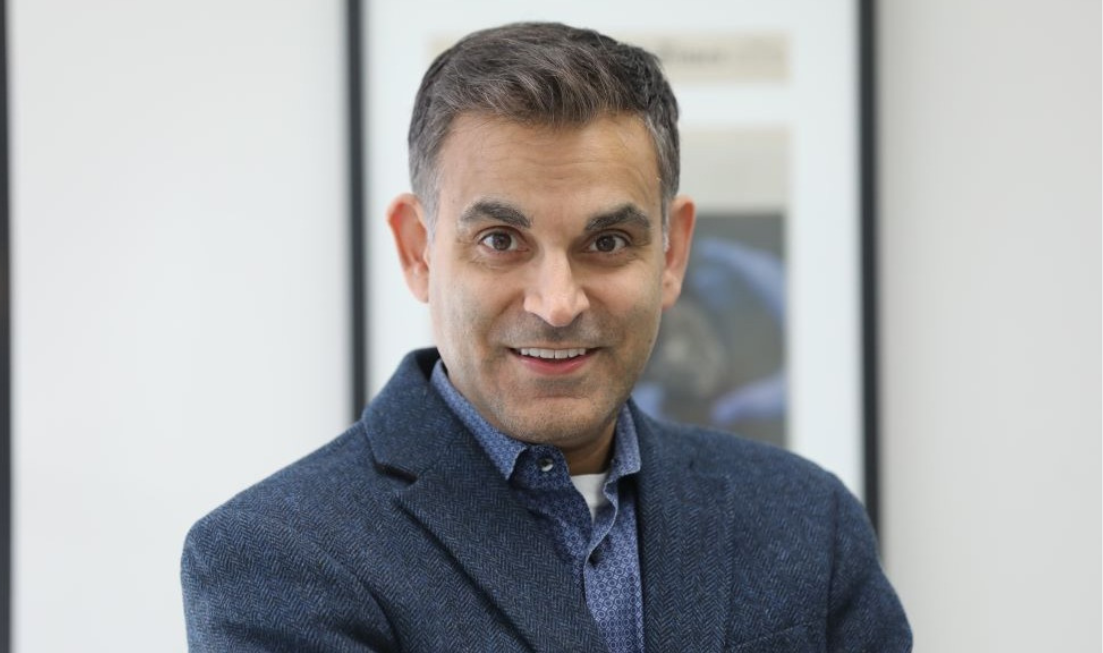Meet the McMaster alumnus who is transforming brain injury scans

CAMH scientist Neil Vasdev, whose groundbreaking work in nuclear medicine started at McMaster, is leading the development of new radioactive imaging agents to detect and treat brain injuries.
BY Beth Gallagher
October 3, 2024
A scientist whose groundbreaking work in nuclear medicine started at McMaster is leading the development of new radioactive imaging agents to detect and treat brain injuries, which could benefit veterans, athletes and victims of intimate partner violence.
Neil Vasdev and his research team at the Centre for Addiction and Mental Health (CAMH) are exploring new ways for positron emission tomography (PET) scans to detect irregularities in all facets of brain health, including cancers.
PET scans generate images of the organs and tissues in the body using radioactive substances, known as tracers, which are injected into the bloodstream. Vasdev and his research team investigate new tracers.
A unique interest in radiochemistry
Radiopharmaceutical science — using radioactive isotopes to diagnose and treat medical conditions — is a rapidly growing discipline, but is still highly specialized, requiring a level of expertise and resources only a few universities can offer.
McMaster is one of them.
That was true even four decades ago, when researchers at McMaster visualized the neurotransmitter dopamine inside the living human brain, shaping the field of radiochemistry, drug discovery and imaging.
When Vasdev started his undergraduate degree here in the mid-1990s, McMaster already had a cyclotron and linear accelerator for producing medical isotopes; a pioneering radiochemistry program; and a research reactor.
“I had access to the fluorine chemistry lab which was extremely unique at a university,” says Vasdev.
Just as crucially, McMaster faculty members were deeply committed to training the next generation of radiochemists, making it the ideal environment for Vasdev to begin a career of groundbreaking work.
“Professors (Raman) Chirakal and (Gary) Schrobilgen took a chance on me for a fourth-year thesis project and then kept me on for grad school,” says Vasdev.
The specialized infrastructure and researchers provided fertile ground for a PhD student driven to make an impact. “I saw one other trainee at Canadian chemistry conferences in my entire grad school career working in the niche field I was in,” he says.
“Doing a PhD in PET radiochemistry at the time was almost impossible.”
Innovations for better health
Today, Vasdev is the scientific director and chief radiochemist of the Brain Health Imaging Centre at CAMH.
He holds a Tier-1 Canada Research Chair in Radiochemistry and Medical Imaging, and an endowed University Chaired Professorship at the University of Toronto, where his research team is working on diagnostic and treatment strategies for new medicines and hope to be the first in the world to diagnose chronic traumatic encephalopathy (CTE) from brain injuries in a living patient.
Vasdev, who also leads the Azrieli Centre for Neuro-Radiochemistry at CAMH, is currently partnering with the McMaster-affiliated Centre for Probe Development and Commercialization (CPDC), founded by McMaster Professor John Valliant. These initiatives will advance the commercialization of radiopharmaceutical technologies and help train radiochemists.
With a global shortage of skilled radiochemists, McMaster is working to expand its talent pipeline through a partnership with Kings College London.
McMaster is also collaborating with Canadian Nuclear Laboratories (CNL) and Atomic Energy of Canada Limited (AECL) on a Nuclear Undergraduate Research Experience program.
“The demand for new radiotherapies and better diagnostic tests has never been greater,” says Karin Stephenson, McMaster’s Director, Nuclear Research and Education Support. “With our unique ecosystem of nuclear facilities and decades of scientific discovery, McMaster is committed to accelerating nuclear medicine innovation.”
150 years’ worth of radiochemistry graduate students
Over the next five years, Vasdev hopes to use the talent development skills he learned at McMaster to help train enough graduate students and postdoctoral researchers to address the shortage through the largest ever Mitacs-funded training initiative.
“I love being involved in training the next generation of scientists,” he says.
Vasdev is also hopeful about the use of the 40-plus new radiopharmaceuticals the CAMH research team has developed, and hopes next-generation radiotracers and chemistry methods will be commercialized.
“There’s quite a renaissance in radiopharmaceutical sciences happening right now. The interest and the desire from companies to translate all this science so that people can benefit from what is happening in the lab is incredible,” says Vasdev
“It’s way beyond just imaging … the potential is huge for modern medicine.”


